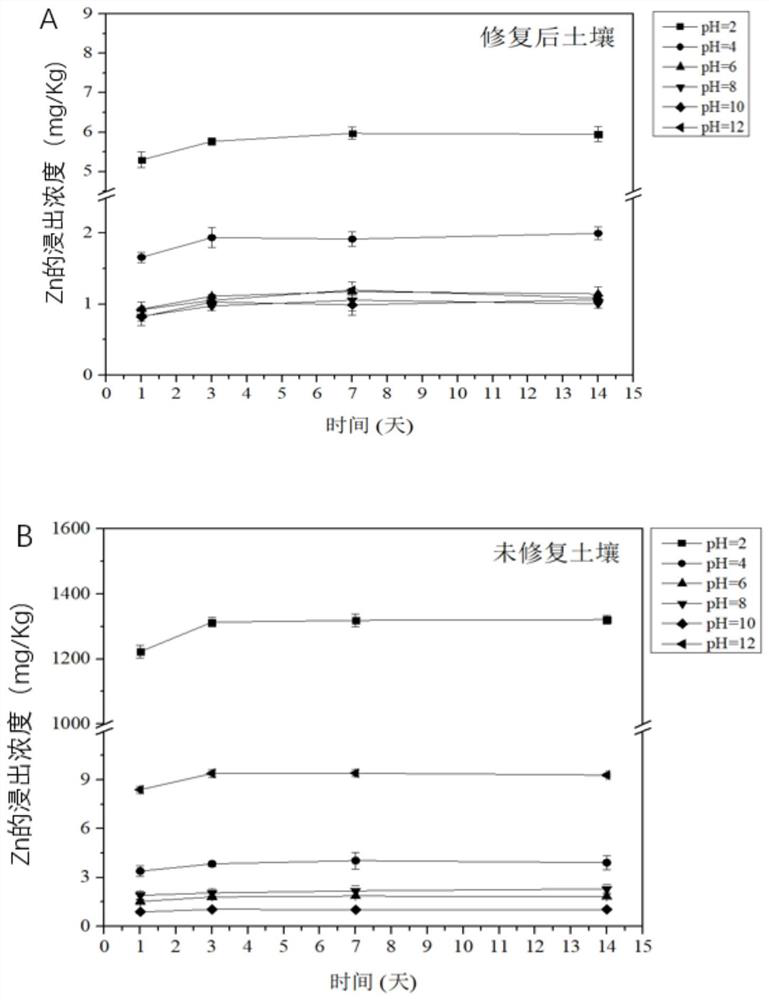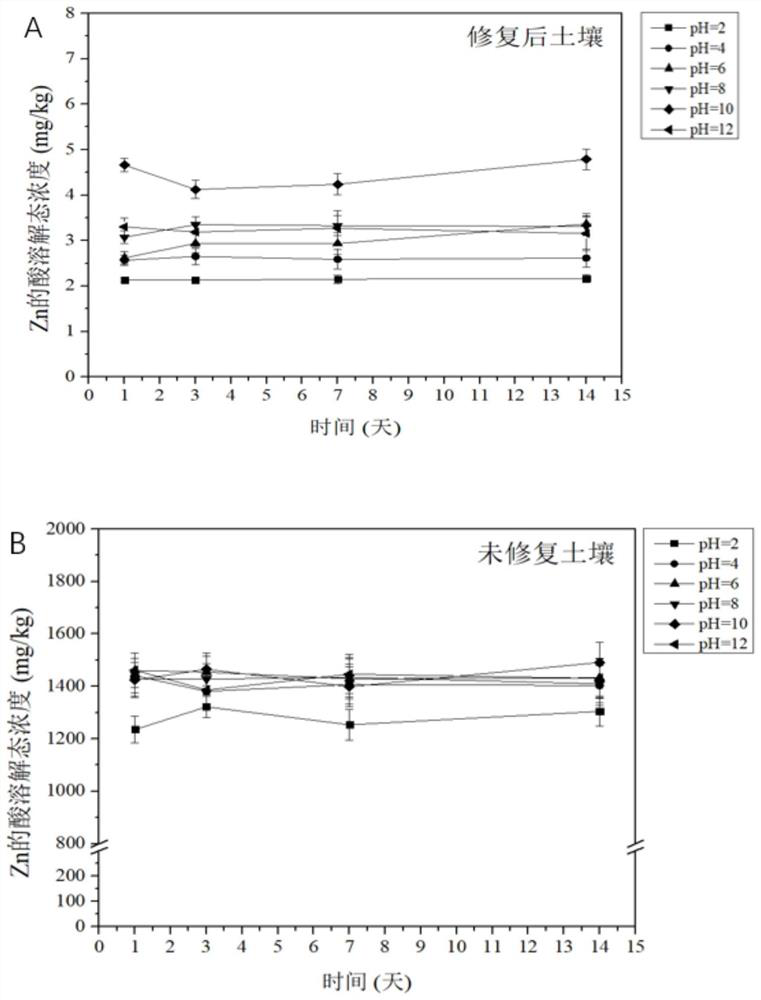Human health risk assessment method for heavy metal contaminated soil
A technology for human health and polluted soil, applied in soil material testing, material inspection products, etc.
- Summary
- Abstract
- Description
- Claims
- Application Information
AI Technical Summary
Problems solved by technology
Method used
Image
Examples
Embodiment 1
[0097] Embodiment 1 Zinc (Zn) contaminated soil human health risk assessment method
[0098] In this example, a laboratory is used to simulate heavy metal-contaminated soil. The non-polluted soil was collected from a green space in a park in Tianhe District, Guangzhou City. It was the surface soil of 30cm, the soil pH was 5.4, and the concentration of Zn in the non-polluted soil was 27.7mg / kg. ZnO powder was artificially added and fully ground to make the polluted soil The Zn content in the medium reaches 3413.7mg / kg; with the addition of Cr 2 o 3 way to form ZnCr 2 o 4 High temperature curing reaction by way of spinel, ZnO and Cr 2 o 3 It is prepared in such a way that the molar ratio is Zn:Cr=1:2. Then, coal gangue and shale were added to the mixed contaminated soil as auxiliary materials. The mass ratio of coal gangue to shale in the auxiliary material was 1:2, and the mass ratio of auxiliary material to contaminated soil was 2:1. The fully mixed and ground sample wa...
Embodiment 2
[0134] Embodiment 2 Copper (Cu) contaminated soil human health risk assessment method
[0135] In this example, a laboratory is used to simulate heavy metal-contaminated soil. The non-polluted soil was collected from a green space in a park in Tianhe District, Guangzhou City. It was the surface soil of 30 cm. The pH of the soil was 5.6, and the concentration of Cu in the non-polluted soil was 15.2 mg / kg. The Cu content in the medium reaches 4656.4mg / kg; with the addition of Cr 2 o 3 CuCr 2 o 4 High temperature curing reaction by way of spinel, CuO and Cr 2 o 3 The molar ratio is Cu:Cr=1:2 for preparation. Then, coal gangue and shale were added to the mixed contaminated soil as auxiliary materials. The mass ratio of coal gangue to shale in the auxiliary material was 1:2, and the mass ratio of auxiliary material to contaminated soil was 2:1. The fully mixed and ground sample was pressed into a cylindrical sample at 350MPa, and after sintering in a muffle furnace at 1000°C...
Embodiment 3
[0141] Embodiment 3 cadmium (Cd) contaminated soil human health risk assessment method
[0142] In this example, a laboratory is used to simulate heavy metal-contaminated soil. The non-polluted soil was collected from a green space in a park in Tianhe District, Guangzhou City. It was the surface soil with a surface layer of 30 cm. The pH of the soil was 5.6, and the concentration of Cd in the non-polluted soil was 0.019 mg / kg. The Cd content in the medium reaches 8412.6mg / kg; with the addition of Cr 2 o 3 form CdCr 2 o 4 High temperature curing reaction by way of spinel, CdO and Cr 2 o 3 The molar ratio is Cd:Cr=1:2 for preparation. Then, coal gangue and shale were added to the mixed contaminated soil as auxiliary materials. The mass ratio of coal gangue to shale in the auxiliary material was 1:2, and the mass ratio of auxiliary material to contaminated soil was 2:1. The fully mixed and ground sample was pressed into a cylindrical sample at 350 MPa, and after sintering ...
PUM
 Login to View More
Login to View More Abstract
Description
Claims
Application Information
 Login to View More
Login to View More - R&D
- Intellectual Property
- Life Sciences
- Materials
- Tech Scout
- Unparalleled Data Quality
- Higher Quality Content
- 60% Fewer Hallucinations
Browse by: Latest US Patents, China's latest patents, Technical Efficacy Thesaurus, Application Domain, Technology Topic, Popular Technical Reports.
© 2025 PatSnap. All rights reserved.Legal|Privacy policy|Modern Slavery Act Transparency Statement|Sitemap|About US| Contact US: help@patsnap.com



